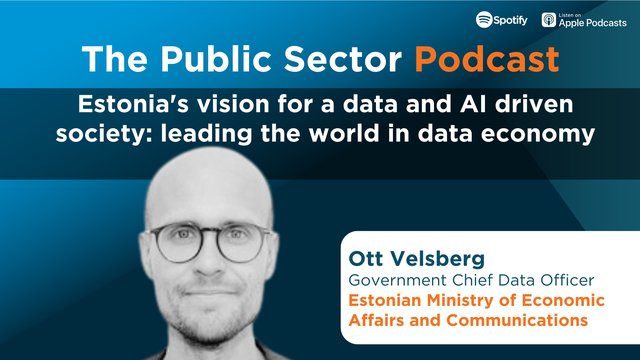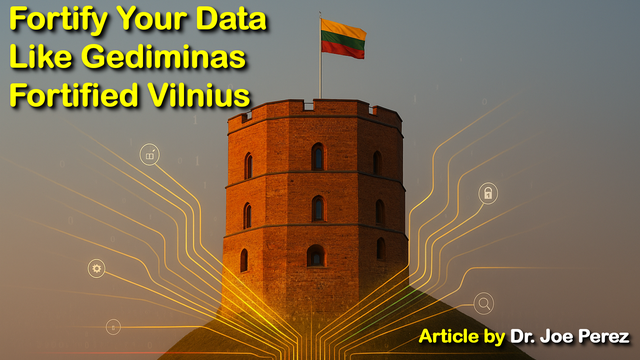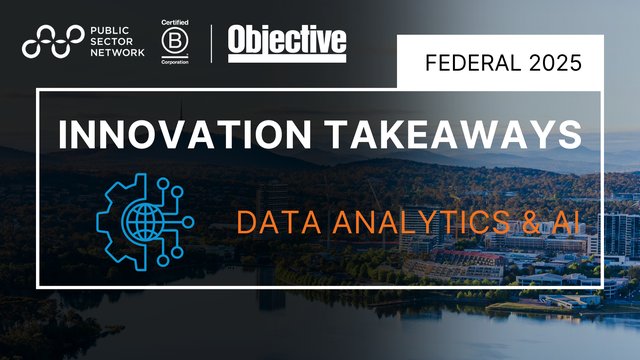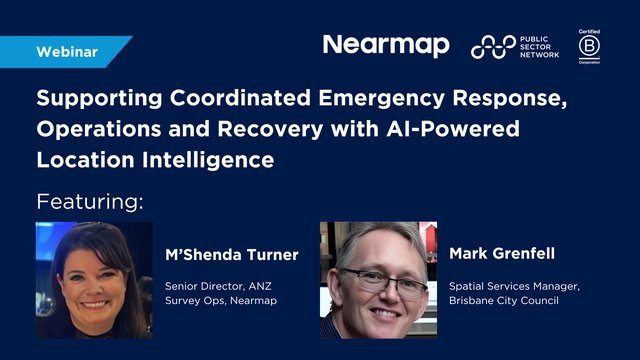
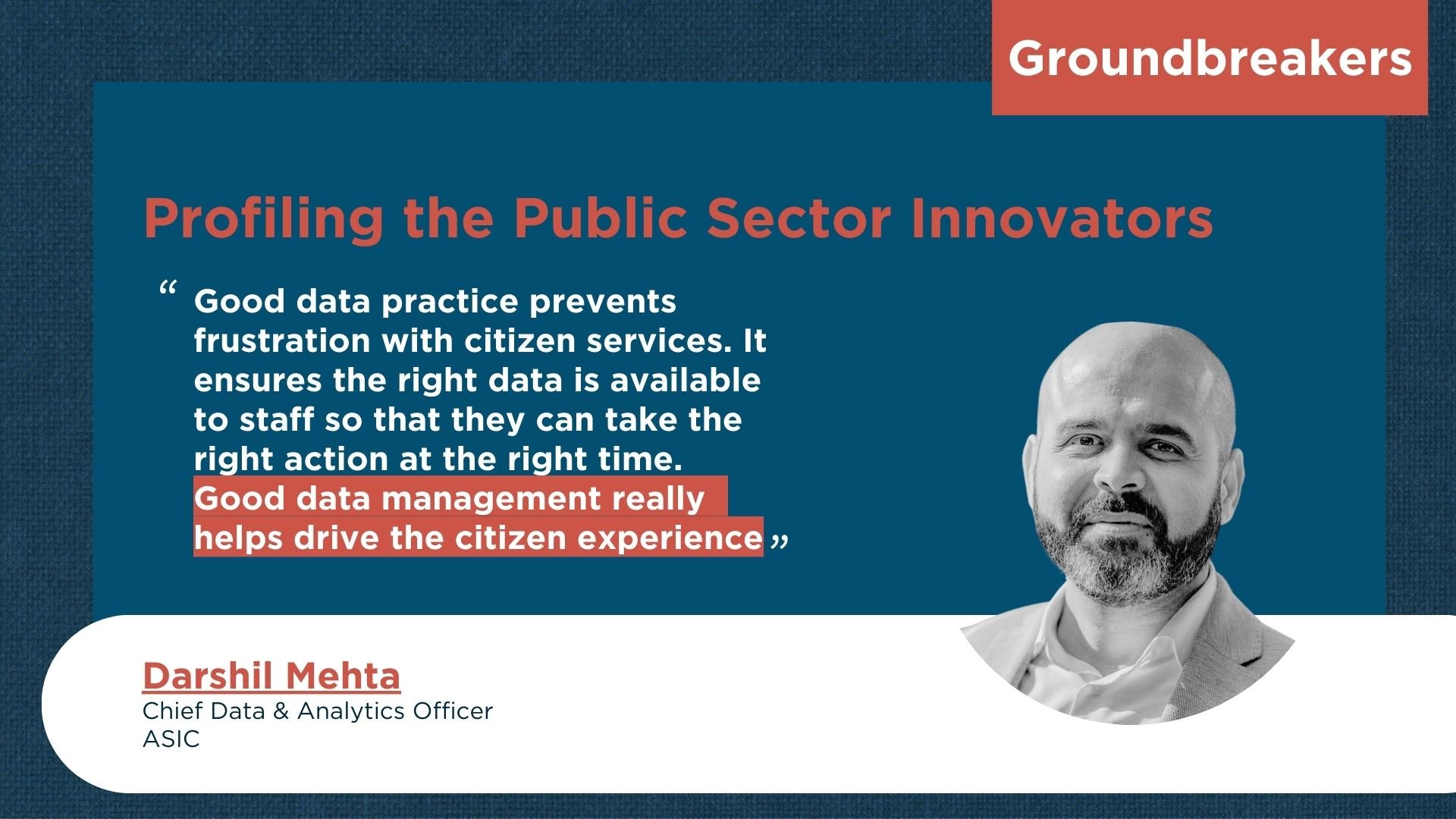
Darshil Mehta, Chief Data & Analytics Officer, ASIC
Darshil Mehta, Chief Data & Analytics Officer for the Australian Securities & Investment Commission, has spent the last four years bringing new meaning to how ASIC can use data to become a digitally enabled and data-informed regulator.
He started this journey as he started his data transformation, by getting buy-in from his stakeholders. Darshil has over twenty five years' experience in data management and analytics, working across both the private and public sector, but he considers his people skills one of his strongest assets. He recently delivered data solution that allows 10,000 companies to send large volume of data which delivers meaningful insights for regulatory purpose is a testament to the power of collaboration and communication.
PSN sat down with Darshil to understand the role data plays in service delivery excellence.
Jordan Mullins, Head of Editorial, Public Sector Network: Darshil, describe your work in a few sentences.
Darshil Mehta, Chief Data & Analytics Officer, ASIC : I would describe myself as a technology evangelist and a culture catalyst. I strongly believe it's always about people, so if I don't take people on the transformation journey, the chances of there being successful data transformation are quite limited.
I go by the philosophy of outcome over output, where if you're doing something with data, what outcome are we achieving rather than what number of outputs we are producing?
I lead a team of data specialists in the range of data governance, strategy, AI and analytics, business intelligence, data engineering, architects and the data OPS team.
In terms of the day-to-day challenges, what do you take personal ownership of?
Work is not fun if there are no challenges. In my day-to-day challenges, there is always the complexities of navigating through different priorities in the organization.
Everything is important. So how do you navigate through the most important among all the priorities?
It's achieved through very strong stakeholder communication at all levels. It also requires strong influencing skills to focus on a priority.
What has motivated you throughout your career?
So I started my career as an IT developer and my very first job was to develop a report, a dashboard. I was motivated by a curiosity to learn more. What is a dashboard? What happens after I create the dashboard? Where does it go? How do we get the data? What about if data is wrong? Who looks after this data? All those questions are a form of end-to-end data management, and this set me down a path.
I was fortunate enough to get exposure working in different organizations and different data fields, including data architecture, as a BA business analyst and as a solution architect. I had a vision in mind that I would stay in the data field, and I would achieve the height of a career at the top of the data chain, which is the Chief Data Officer role in any organization. So I made my plan accordingly.
It took some self-learning and professional coaching, and I was fortunate to work in a good industry with good colleagues where I learnt a lot on the job, and this all helped me achieve my goal of becoming Chief Data and Analytics Officer.
Is there a career highlight for you so far that you wish to share?
I received an award for best leader for two consecutive years in my previous organization, which was a proud moment for me, personally.
Then, in my recent work, I’ve completed a cornerstone project. This is something me and the team are proud of. It is the development of a state-of-the-art solution working with 10,000 plus companies in Australia. The solution enables the collection of a very, very large volume of data and then, behind the scenes, the processing of that data, identifying errors, fixing them where possible, then storing and using that data. It was a two-year project, but ultimately one of the biggest successes we ever had. So, it's been one of my favorite projects that I never stop bragging about it.
10,000 companies, that’s a lot of moving parts. How did you get all of the stakeholders aligned on a single outcome?
Look, it wasn’t easy. When I started the journey, there was really strong pushback by many stakeholders. As you would expect from any large transformation, it goes back to my earlier point about being a culture catalyst.
It’s important that we bring people on our journey from the start and continuously remind them the vision that we are trying to achieve. Why it's important, how it's aligned to the organizational priority was a key day-to-day challenge that I took personal ownership of.
As I mentioned earlier, a combination of stakeholder negotiations, stakeholder engagement, and influencing skills really helped me to get from where I started to where I am today.
I think that it speaks to sharing your passion for data with people as well. Is there a key skill set that you think every person in your team needs to have?
One of the main skills every data professional should have is communication.
Data people are very good in what they do in their technical specialty but when it comes to communicating about data to non-technical people, I see that's a huge skill gap.
It’s something I emphasise to my direct reports and my whole team. It’s crucial everyone works to improve their communication so that it’s simpler and delivers more meaning to stakeholders. This is a must-have for every person in my team.
You mentioned that you're very outcome focused. How do you measure how a project is tracking?
There are a couple of different ways to measure the projects or solutions. One is the traditional project management methodology: tracking scope, time and cost. Whether we are delivering as per scope within time, within budget, is important but it’s an outcome measure.
Core to our role as a regulator, it’s our responsibility to reduce harm in people’s lives with the right solution. I want to ensure we’ve reduced harm in people's life by delivering a solution. Have we identified more fraudulent cases because we delivered this advanced data capability, which helps to identify fraud earlier?
Those are the specific outcomes and that's what we are considering. The cornerstone project, which I spoke about earlier, focused on getting the right data at the right time, and driving regulatory activity based on that data. So depending on the type of the project, I include the blend of project management, and three components; time, budget, versus the outcome of individual solution that we deliver.
How do you believe good data management practices can benefit service delivery and benefit the public?
When the public interact with the government, whether it's state, federal or local, they should not feel frustrated. They should get the right information at the right time.
A personal example I can give is an experience I had contacting local government as a citizen. All I needed to do was access a form, but I had to call three to four times, and was on-hold for thirty minutes. I didn’t get the information I wanted, so I Googled the information myself eventually, which is the worst citizen experience.
Good data management practice prevents frustration with citizen services. It ensures the right data is available to the staff so that they can answer calls quickly and give the right information at the right time.
My last question, how can we improve public trust in government's use of public data?
The public needs to know how the government is using their data. That's the first step to building trust.
If I'm going to apply for a passport and giving my very, very personal information, the government should tell me how they’re going to use my data in addition to creating my passport. Every government department should be willing to show how public data is used, how they're protecting public data, how it is stored in a safe and secure environment and there good data governance practices that prevents unauthorised access to the data. Making data management transparent to the public will increase confidence in the government’s data handling capability.


